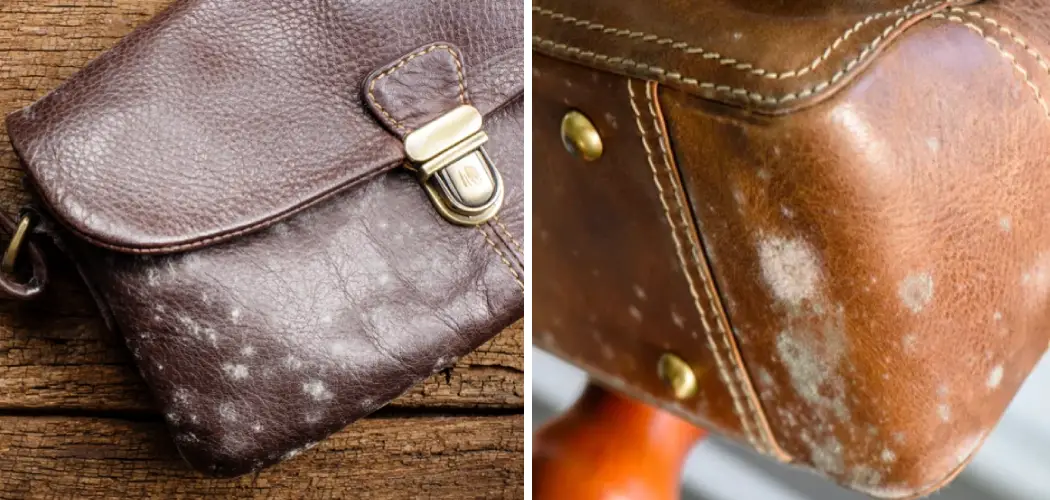Storing leather bags correctly is an important part of preserving them. The most common problem that can occur when you do not store your leather correctly is the development of mold or mildew. This can lead to irreparable damage to the bag and make it unappealing to use. Therefore, it is important that you know to store leather bags to prevent mold from developing and ruining your bag.
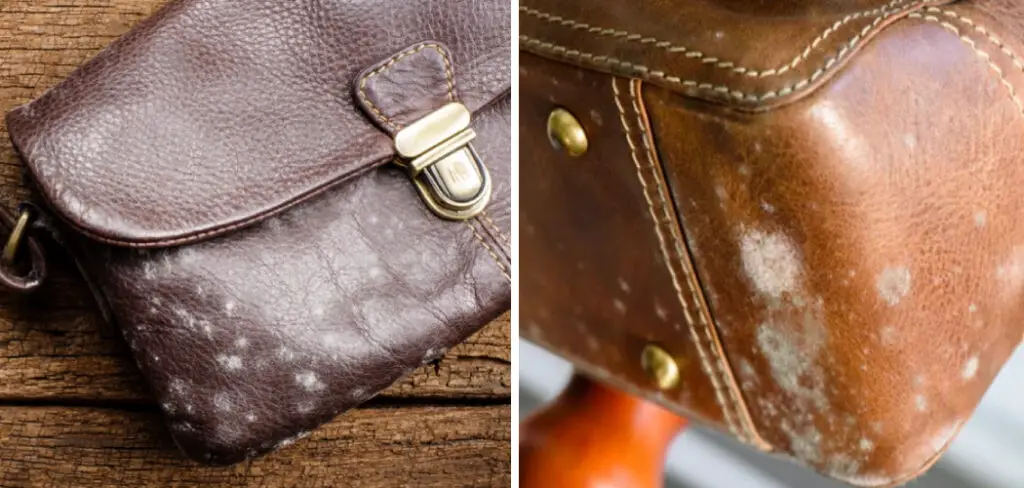
Storing leather bags properly is an important part of keeping them in good condition. Proper storage prevents a number of problems, including mold growth, damage due to improper handling, and premature wear and tear. When stored correctly, your leather bag will remain looking its best for years to come. You can find step-by-step instructions on how to store leather bags to prevent mould in this blog article.
Step-by-step Instructions for How to Store Leather Bags to Prevent Mould
Step 1: Inspect the Bag
Before you store a leather bag, it’s important to ensure the bag is clean and mold-free. Check the bag’s outside and inside for any signs of mold. If found, cleaning with a damp cloth may help, but if there are severe signs of mold, professional cleaning may be necessary.
Step 2: Clean the Bag
Use a soft cloth and warm water with just a few drops of gentle soap to spot-clean your bag. Gently scrub areas that may have come in contact with moisture, such as corners and seams. Lay the bag on a flat surface to dry and ensure all the crevices are dry. Use a hairdryer on low or medium heat setting to help speed up the drying process.
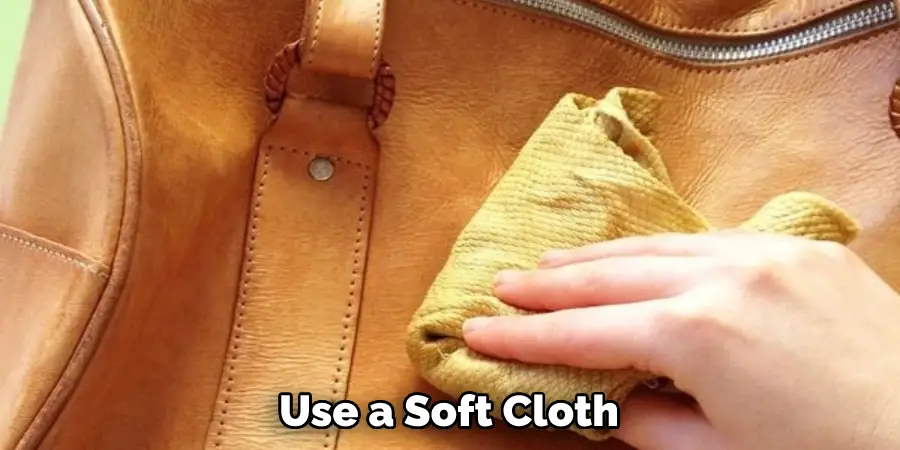
Step 3: Place in Open Area
Place the bag in an open area where plenty of fresh air is circulating throughout. Avoid storing your leather bag in enclosed spaces such as closets, drawers, and boxes. Add a few silica gel packets to help absorb excess moisture from the bag. Make sure the packets are placed in an unobtrusive area of the bag – such as inside a pocket or behind a zipper.
Step 4: Use Cedar Blocks
Place cedar blocks or other natural odor-absorbing items inside the bag to help prevent mold from growing. Avoid storing your bag in areas where the temperature can fluctuate dramatically – such as an attic, basement, or garage. Opt for climate-controlled areas such as closets and dressers with good ventilation.
Step 5: Put in Breathable Bags
Place the leather bag into a breathable bag before storing it away. This will help keep dust, mildew, and dirt from settling on the bag. To keep your leather bag looking its best, it’s important to condition it periodically. This will help prevent drying and cracking over time.
Step 6: Check for Mould Regularly
Make sure to check your leather bag periodically for signs of mold or mildew. If found, clean the area with a damp cloth and dry it thoroughly before storing again.
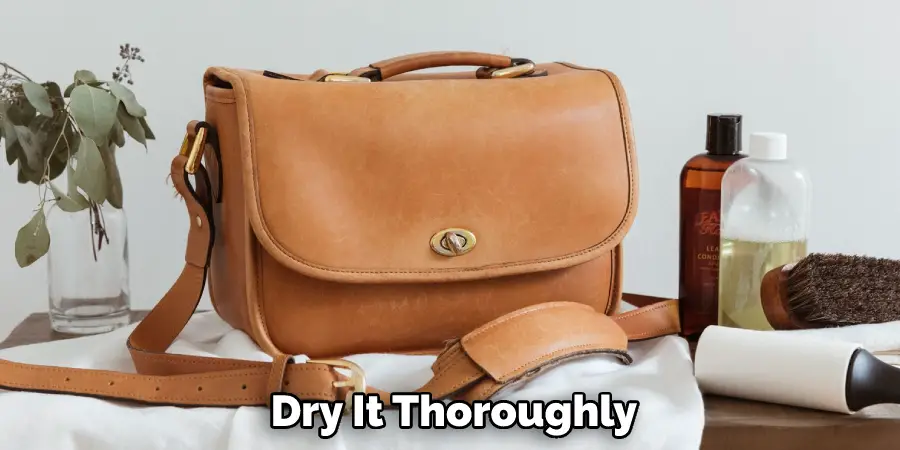
By following these steps, you can help ensure that your leather bag lasts longer and stays looking its best.
Precautions for How to Store Leather Bags to Prevent Mould
- Avoid storing leather bags in damp conditions, as this encourages mold growth.
- Clean dirt and debris from leather bags with a soft cloth or brush before storing to prevent mold spores from forming.
- Store leather bags away from sources of heat, direct sunlight, or humidity to reduce the risk of mold growth.
- Place a dehumidifier in the area where leather bags are stored to reduce moisture and prevent mold.
- Place silica gel packets in the storage area to absorb excess moisture from leather bags and protect them from mold.
- Hang leather bags on specially designed hangers or hooks to help keep the bag’s shape intact and prevent folds that might promote mold growth.
- Store leather bags in a breathable fabric or cotton bag to help keep them dry and free from mold spores. Be sure to open the bag occasionally for ventilation.
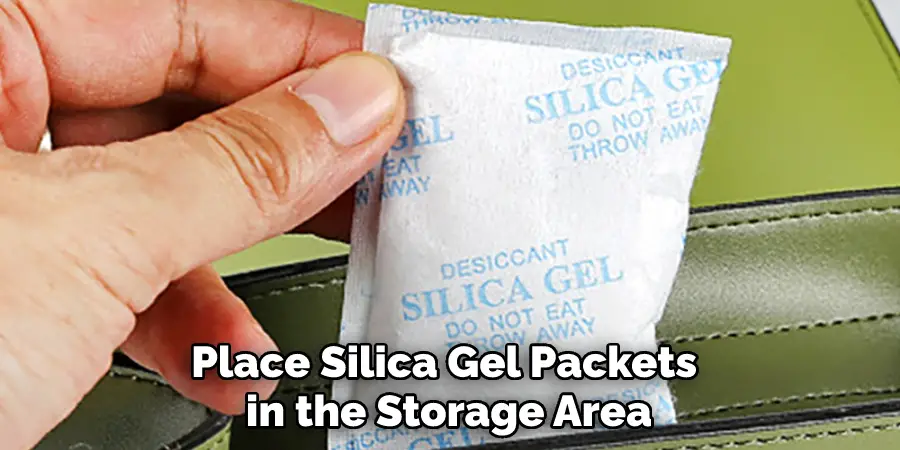
Following these precautions will ensure that your leather bags remain safe from any mold, protecting them from damage and preserving their quality for years to come.
How Can You Best Store Leather Bags to Prevent Mould?
Storing leather bags correctly can extend your bag’s life and help prevent mold. First, clean your leather bag regularly, as dirt and dust are ideal environments for mold growth. Once cleaned, store your leather bag in a cool area with good air circulation to reduce moisture build-up. If possible, store your bag in a fabric dust bag or pillowcase to help absorb excess moisture.
Do not store your leather bag in humid areas, such as the bathroom or basement, as this could cause mold growth. When storing leather bags for extended periods of time, it is best to use a cedar block or lavender sachet to help keep away insects, which can also contribute to mold growth. Finally, if your leather bag does become damp or wet, dry it out quickly with a microfiber cloth or tissue paper and store it in a cool area until completely dry.
Should You Avoid Certain Temperatures When Storing Leather Bags?
When it comes to storing leather bags, you should avoid extremely hot and cold temperatures. Excessive heat or cold can cause the leather to dry out, crack, or become brittle. In addition, sudden changes in temperature can also affect the bag’s appearance. Keep your leather bags away from direct sunlight as well as humidity-prone areas such as bathrooms and basements.

When storing leather bags, it’s important to make sure the bags are clean and dry before putting them away. Wipe down the bag with a damp cloth to remove any dirt or grime that may be on the surface of the bag. Make sure to use mild soap, such as saddle soap, for tougher stains, and don’t forget to let the bag air dry completely before storing it.
Is It Necessary to Clean the leather bag before storage to Prevent Mould Growth?
It is recommended to clean the leather bag before storage in order to prevent mold growth. Leather is porous, meaning that dirt and bacteria can easily get trapped inside its crevices, increasing the risk of mold growth. Cleaning your bag with a mild cleaner and damp cloth will help remove any lingering bacteria or dirt particles that may have been left behind.
Once the leather bag is clean, it’s a good idea to apply a leather protector or conditioner in order to protect the material from damage and keep it looking its best.
This will also help ensure that mold doesn’t grow on the bag’s surface, as it may be more easily able to take root in dirtier areas of the material. Taking proactive steps like cleaning and applying a leather protectant can help ensure that your bag stays mold-free for longer periods of time.
If you find yourself dealing with an unexpected outbreak of mold on your leather bag, it’s important to take action as soon as possible. Even if it seems minor at first, mold can spread quickly and cause significant damage to the material as well as your personal belongings inside.
Are There Any Natural Solutions That Can Be Used to Help Protect Leather Bags From Mould?
Yes. A few natural solutions can be used to help protect leather bags from mold. The best way to prevent mold is to keep the leather bag dry and in a well-ventilated area, such as away from direct sunlight or damp conditions. If your leather bag cannot be kept away from these elements, cleaning it regularly using a damp cloth is more important then allowing it to dry completely.
You can also use natural solutions such as cedar wood chips or lavender essential oil to help protect your bag from mold.
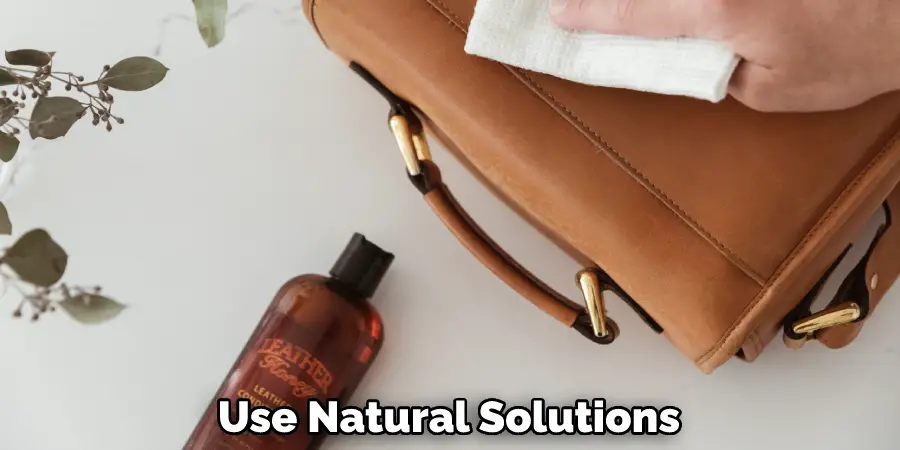
Cedar wood chips have natural anti-fungal properties that can help keep mold away, while lavender essential oil has antiseptic properties that can help protect the leather from mold. When using either of these natural solutions, be sure only to use them on a clean and dry bag, as they may not work properly if used on wet or dirty leather.
Regularly cleaning your leather bag and using natural solutions such as cedar wood chips or lavender essential oil can help protect it from mold and keep it looking beautiful for years to come.
How Long Can You Expect a Properly Stored Leather Bag to Stay Free of Mould?
When it comes to preventing mold growth on leather bags, proper storage is key. To keep your leather bag free from the mold for as long as possible, the ideal temperature and humidity range should remain between 20°C – 25°C and 40-60%, respectively. Doing so helps prevent bacteria from growing on your leather bag, which can lead to mold growth.
Also, storing your bag in a well-ventilated area will help reduce the risk of moisture build-up within the material. It is important to note that leather bags are not impervious to mold and can still develop if stored incorrectly or exposed to moist conditions for an extended period of time. However, with proper storage, you should be able to keep your leather bag free of mold for many years.
Can You Expect Any Special Care Instructions When Storing a New or Vintage Leather Bag?
When purchasing a new or vintage leather bag, you should always ask the retailer for the best possible care instructions to ensure your item is kept in top condition. This includes information on how to store it for long periods of time and protect it from mold and mildew.
The most important aspect of storing a leather bag is keeping it in a cool, dry place. A leather bag should never be stored in direct sunlight or near any heat source as this could cause cracking and fading of the material over time.
Moreover, mold and mildew can easily spread on leather surfaces if the environment is too humid. When storing a new or vintage leather bag, it is also important to use acid-free tissue paper to wrap the item and protect it from dust and other particles that could cause damage.
If possible, you should also stuff your bag with acid-free tissue or newspaper to maintain its shape and help reduce any creasing or wrinkles in the material.
How Often Should You Check for Mould on Stored Leather Bags?
When storing leather bags, it is important to check the items for signs of mold regularly. Mold can develop quickly when leather bags are not stored properly, and the damage caused by mold can be irreversible.
Therefore, inspecting stored leather bags at least once a month is important. When inspecting, pay close attention to any signs of discoloration, cracking, or musty smells that may indicate the presence of mold. If any signs of mold are present, take immediate action to clean and treat the leather bag before further damage occurs.
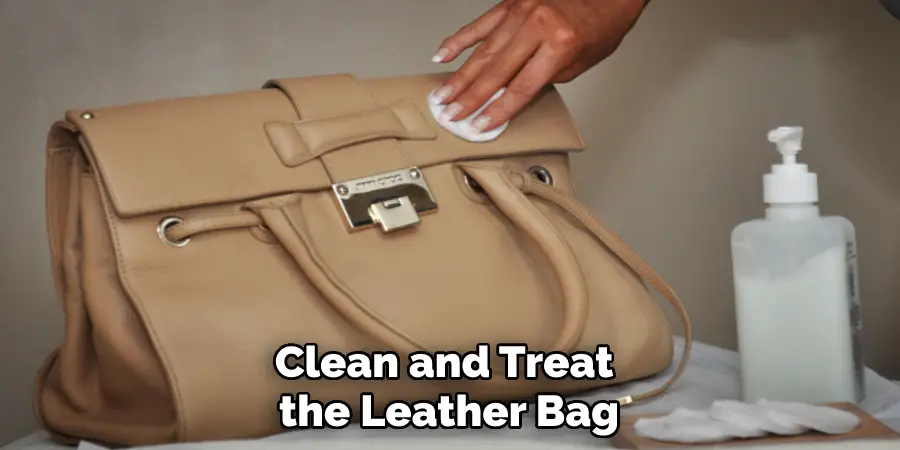
Additionally, be sure to check the packaging materials used for storing the leather bag, as these can also become a breeding ground for mold. If the leather bag is being stored long-term, checking the item every three months is recommended. This should help ensure that mold can be detected and prevented before too much damage occurs. Furthermore, keep the area where the bags are stored clean and dry to reduce any chances of mold developing.
Conclusion
In conclusion, storing your leather bags to prevent mold is essential to keeping them in good condition. It requires taking into account the environment, proper cleaning and conditioning techniques, and overall care to ensure that the leather remains in its best condition for many years to come. Storing your leather bag properly can save you from costly repairs or replacements down the line.
Make sure to keep your leather bag away from wet areas and direct sunlight, as this can cause discoloration or cracking of the leather. Clean and condition it regularly, allowing the leather to breathe while avoiding a build-up of moisture that can cause mold. I hope reading this post has helped you learn how to store leather bags to prevent mould. Make sure the safety precautions are carried out in the order listed.

